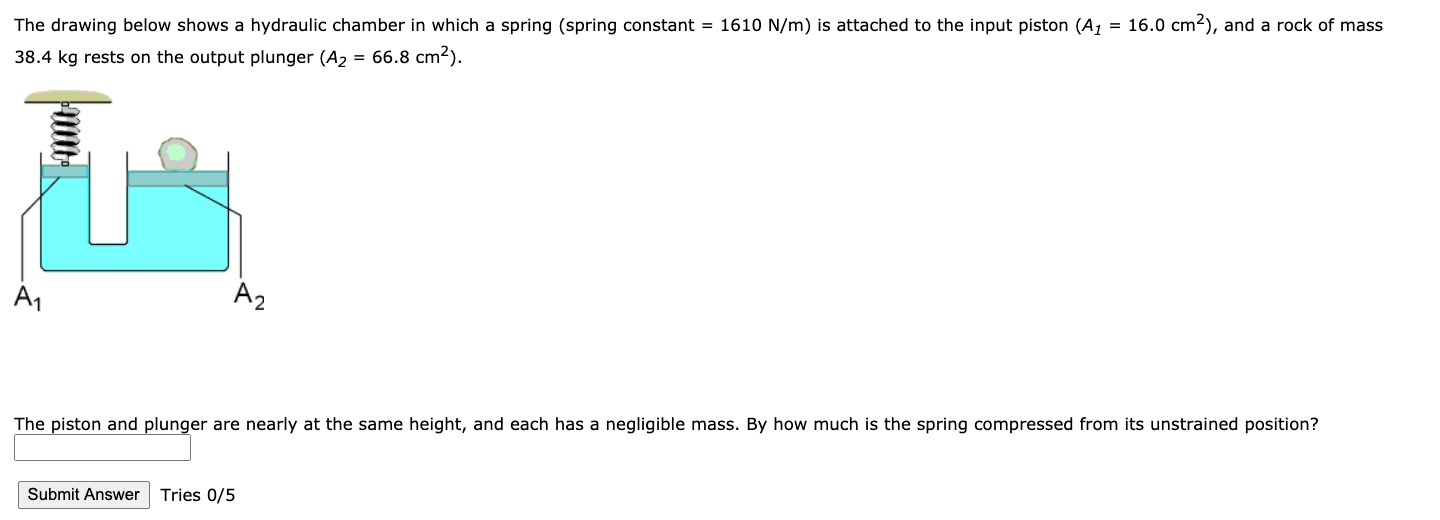The Drawing Shows A Hydraulic Chamber With A Spring, So for this problem we have an hydraulic chamber with a spring as is shown in this figure and the spring constant has a value of 1600 ne…
The Drawing Shows A Hydraulic Chamber With A Spring - Web a hydraulic chamber in which a spring (spring constant = 1550 n/m) is attached to the input piston (a1 = 14.1 cm^2), and a rock of mass 36.1 kg rests on the. Web the drawing shows a hydraulic chamber with a spring (spring constant 1600 n/m) attached to the input piston and a rock of mass 40.0 kg resting on the output plunger. The one is equal to f to over a two. Web the drawing below shows a hydraulic chamber in which a spring (spring constant = 1580 n/m) is attached to the input piston (a1 = 15.0 cm2), and a rock of mass 37.8 kg rests. Web the drawing below shows a hydraulic chamber in which a spring (spring constant = 1580 n/m) is attached to the input piston ( a1 = 15.3 cm2), and a rock of. So f1 is equal to the weight of the stone, which is equal to 40 times 9.8, 392. Web the drawing shows a hydraulic chamber with a spring (k = 1600 n / m) attached to the input piston and a rock of mass 40.0 kg resting and plunger are nearly at the same. The drawing shows a hydraulic chamber with a spring (spring constant = 1600 n/m) attached to the input piston and a rock of mass 40.0 kg resting on. So we have pascal's principle, which says f1 over a1 is equal to f2 over a2. So we have pascal's principle, which is f one over. Web the drawing below shows a hydraulic chamber in which a spring (spring constant = 1580 n/m) is attached to the input piston (a1 = 15.0 cm2), and a rock of mass 37.8 kg rests. So for this problem we have an hydraulic chamber with a spring as is shown in this figure and the spring constant has a value. The drawing shows a hydraulic chamber with a spring (spring constant = 1600 n/m) attached to the input piston and a rock of mass 40.0 kg resting on. So for this problem we have an hydraulic chamber with a spring as is shown in this figure and the spring constant has a value of 1600 ne… Web a hydraulic chamber. Web the spring in the hydraulic chamber is compressed by 24.5 cm from its unstrained position when a 40.0 kg rock is resting on the output plunger. The drawing shows a hydraulic chamber with a spring (spring constant $=1600 \mathrm. Web the drawing shows a hydraulic chamber with a spring (spring constant = 1100 n/m) attached to the input piston. So we have pascal's principle, which is f one over. Web the drawing below shows a hydraulic chamber in which a spring (spring constant = 1580 n/m) is attached to the input piston (a1 = 15.0 cm2), and a rock of mass 37.8 kg rests. Web the drawing shows a hydraulic chamber with a spring (spring constant = 1760 n/m). Web web the drawing below shows a hydraulic chamber in which a spring (spring constant = 1620 n/m) is attached to the input piston ( a1 = 16.4 cm 2 ), and a rock of mass 36.1 kg. Web the drawing shows a hydraulic chamber with a spring (spring constant 5 1600 n/m) attached to the input piston and a. Web the drawing shows a hydraulic chamber with a spring (spring constant = 1100 n/m) attached to the input piston and a rock of mass 49.0 kg resting on the output. Web the drawing below shows a hydraulic chamber in which a spring (spring constant = 1580 n/m) is attached to the input piston ( a1 = 15.3 cm2), and. Web the drawing shows a hydraulic chamber with a spring (spring constant 1600 n/m) attached to the input piston and a rock of mass 40.0 kg resting on the output plunger. Web the drawing shows a hydraulic chamber with a spring (spring constant = 1760 n/m) attached to the input piston and a rock of mass 32.0 kg resting on. The one is equal to f to over a two. So f1 is equal to the weight of the stone, which is equal to 40 times 9.8, 392. So if one is equal to the weight off the stone, which is. So for this problem we have an hydraulic chamber with a spring as is shown in this figure and. Web the drawing below shows a hydraulic chamber in which a spring (spring constant = 1580 n/m) is attached to the input piston ( a1 = 15.3 cm2), and a rock of. So we have pascal's principle, which says f1 over a1 is equal to f2 over a2. Web the drawing below shows a hydraulic chamber in which a spring. Web the spring in the hydraulic chamber is compressed by 24.5 cm from its unstrained position when a 40.0 kg rock is resting on the output plunger. Web the drawing below shows a hydraulic chamber in which a spring (spring constant = 1580 n/m) is attached to the input piston ( a1 = 15.3 cm2), and a rock of. Web. Web the drawing below shows a hydraulic chamber in which a spring (spring constant = 1580 n/m) is attached to the input piston ( a1 = 15.3 cm2), and a rock of. So for this problem we have an hydraulic chamber with a spring as is shown in this figure and the spring constant has a value of 1600 ne… The drawing shows a hydraulic chamber with a spring (spring constant = 1600 n/m) attached to the input piston and a rock of mass 40.0 kg resting on. Web the drawing shows a hydraulic chamber with a spring (spring constant 1600 n/m) attached to the input piston and a rock of mass 40.0 kg resting on the output plunger. Web the drawing shows a hydraulic chamber with a spring (spring constant = 1760 n/m) attached to the input piston and a rock of mass 32.0 kg resting on the outpu. So f1 is equal to the weight of the stone, which is equal to 40 times 9.8, 392. So if one is equal to the weight off the stone, which is. Web the drawing shows a hydraulic chamber with a spring (spring constant = 1100 n/m) attached to the input piston and a rock of mass 49.0 kg resting on the output. Web web the drawing below shows a hydraulic chamber in which a spring (spring constant = 1620 n/m) is attached to the input piston ( a1 = 16.4 cm 2 ), and a rock of mass 36.1 kg. So we have pascal's principle, which is f one over. Web the drawing shows a hydraulic chamber with a spring (k = 1600 n / m) attached to the input piston and a rock of mass 40.0 kg resting and plunger are nearly at the same. Web the drawing shows a hydraulic chamber with a spring (spring constant 5 1600 n/m) attached to the input piston and a rock of mass 40.0 kg resting on the output plunger. So we have pascal's principle, which says f1 over a1 is equal to f2 over a2. The one is equal to f to over a two.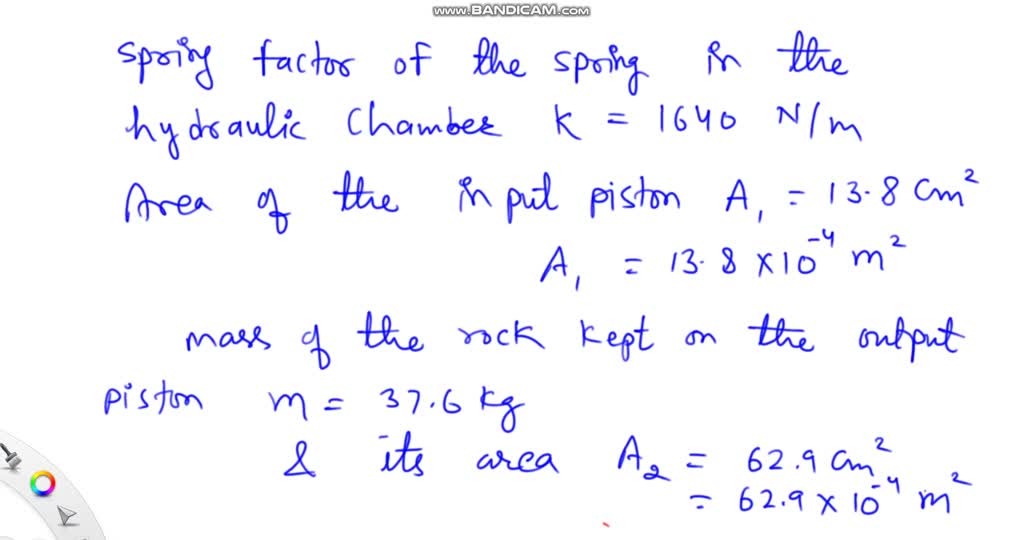
SOLVED The figure below shows a hydraulic chamber in which a spring
Solved The drawing below shows a hydraulic chamber in which
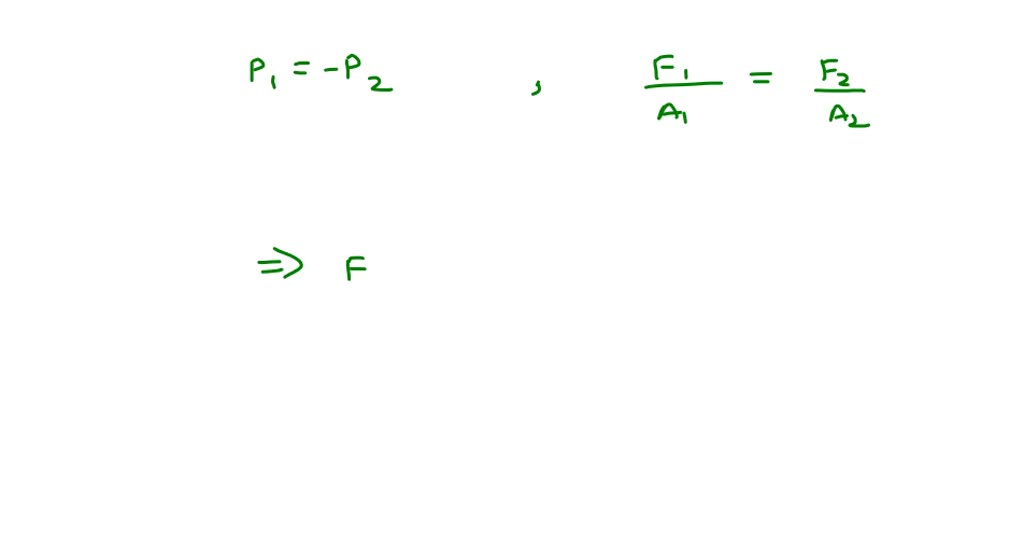
SOLVEDThe drawing shows a hydraulic chamber in which a spring (spring
[Solved] . The drawing shows a hydraulic chamber with a spring (spring

Solved The drawing shows a hydraulic chamber with a spring
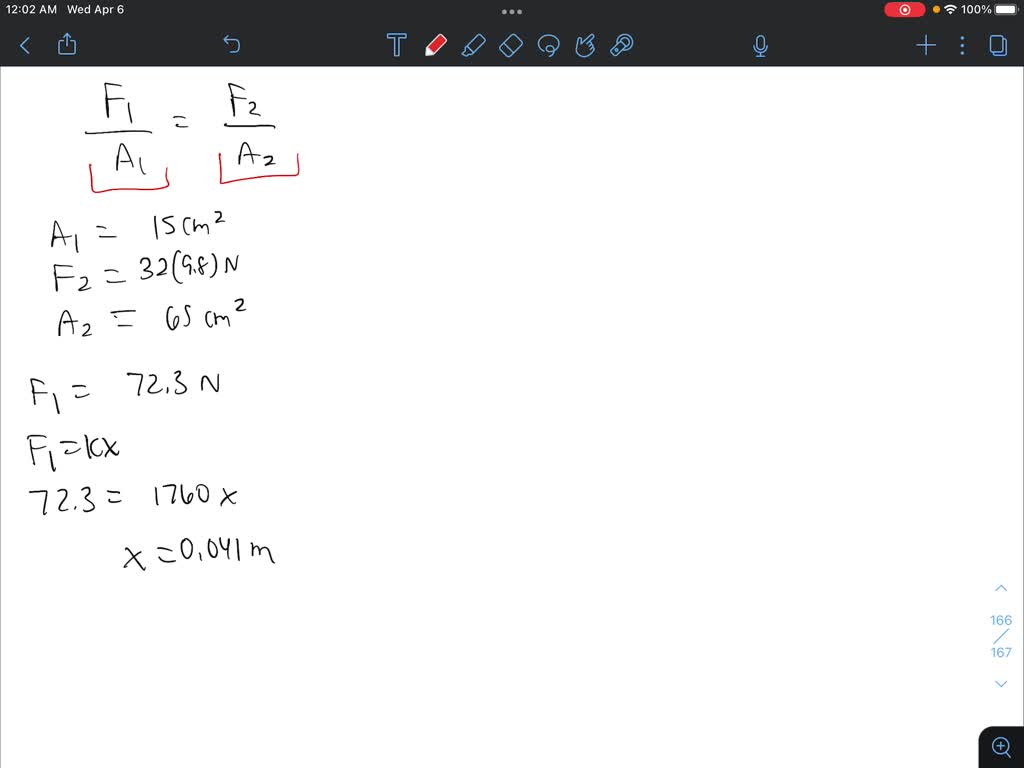
SOLVED The drawing shows hydraulic chamber with spring (spring

Solved The drawing below shows a hydraulic chamber in which

Solved The drawing below shows a hydraulic chamber in which
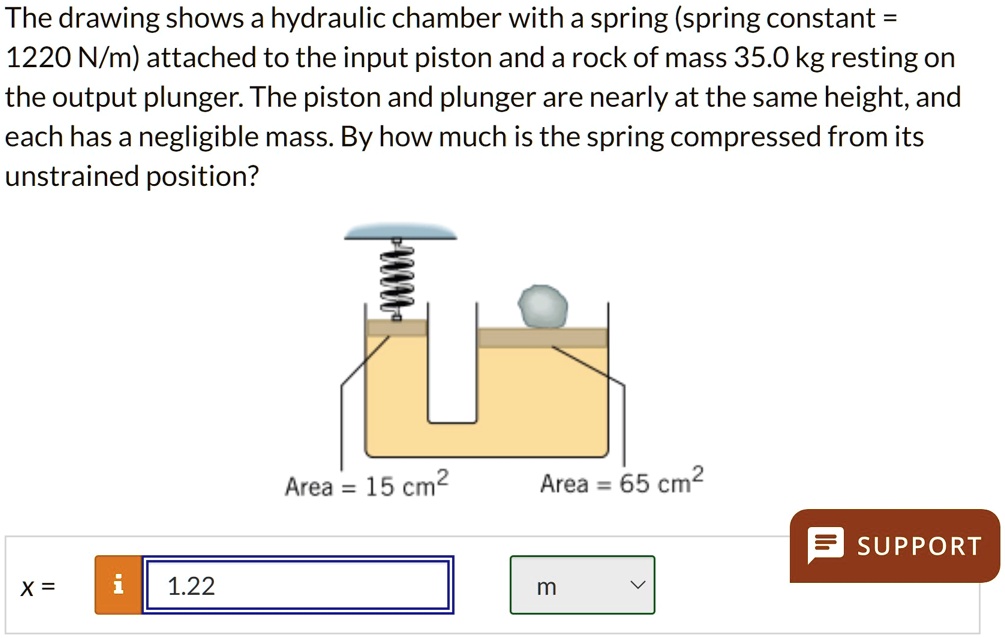
SOLVED The drawing shows a hydraulic chamber with a spring (spring
Solved 5. ( /20pts) The drawing shows a hydraulic chamber
Web The Drawing Below Shows A Hydraulic Chamber In Which A Spring (Spring Constant = 1580 N/M) Is Attached To The Input Piston (A1 = 15.0 Cm2), And A Rock Of Mass 37.8 Kg Rests.
Web A Hydraulic Chamber In Which A Spring (Spring Constant = 1550 N/M) Is Attached To The Input Piston (A1 = 14.1 Cm^2), And A Rock Of Mass 36.1 Kg Rests On The.
The Drawing Shows A Hydraulic Chamber With A Spring (Spring Constant $=1600 \Mathrm.
Web The Spring In The Hydraulic Chamber Is Compressed By 24.5 Cm From Its Unstrained Position When A 40.0 Kg Rock Is Resting On The Output Plunger.
Related Post:
